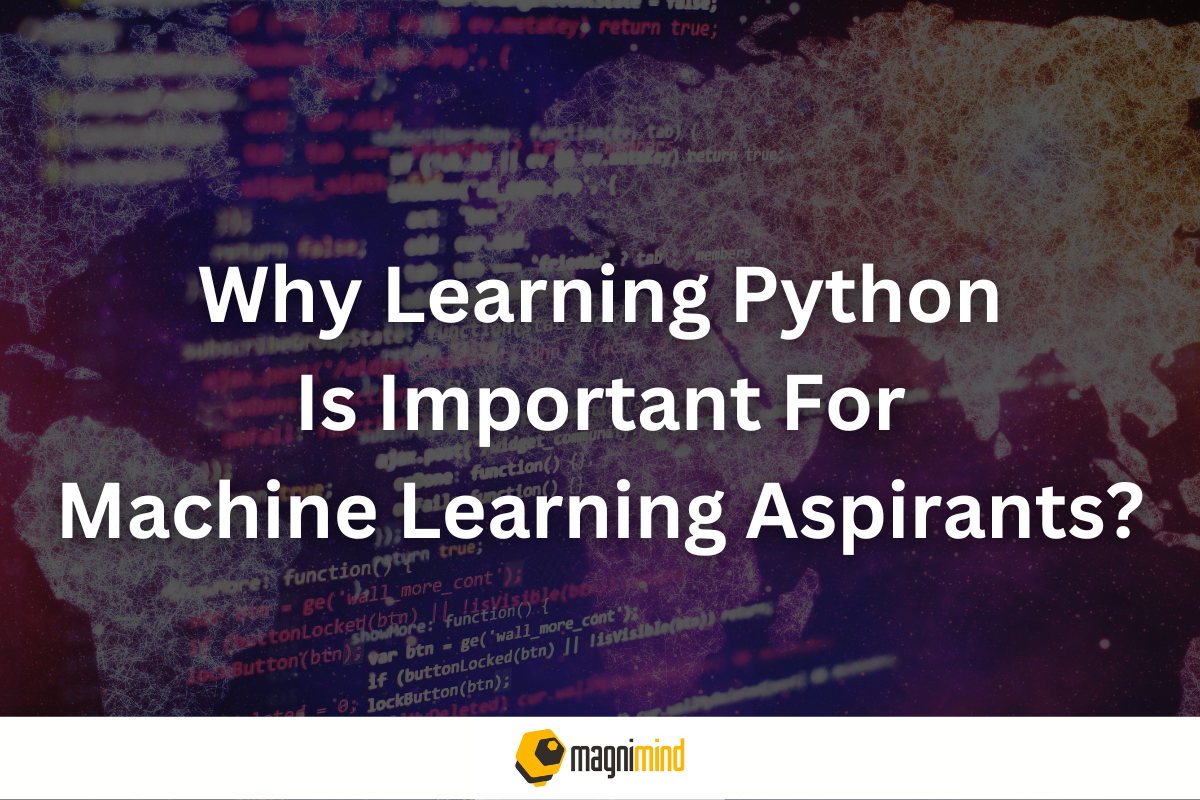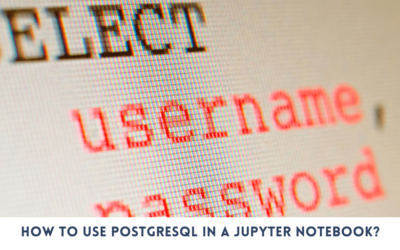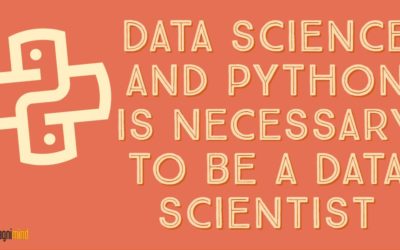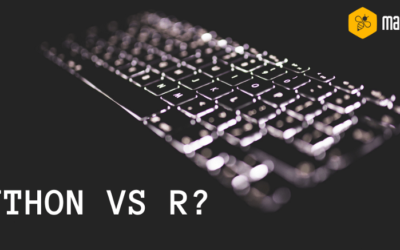Today, Python has become one of the most favored programming languages among developers across the globe – from process automation to scripting to web development to machine learning – it’s used everywhere. Before we delve deeper to understand why Python is steadily becoming a great choice among machine learning professionals, let’s have a quick look at where actually the study of algorithms helps in.
Perhaps you already know that artificial intelligence (AI) stands for any intelligence demonstrated by a machine in order to obtain an optimal solution. Machine learning, which is a part of the broad category of data science, is what takes the solution further by using algorithms that finally helps in making informed decisions.
In the context of information technology, we can see that companies are increasingly investing strategically into resource pools associated with machine learning. And professionals are talking about Python that has become a juggernaut already. But why Python, especially when there’re lots of other programming languages?
The need for a good language
Standard expertise in and familiarity with a robust programming language is almost imperative for machine learning professionals. Unless you’re a researcher working purely on some complex algorithm, you’re expected to use the existing machine learning algorithms mostly and apply them in resolving problems. And this requires a programming hat for you to put on.
The equation between machine learning and Python

Apart from enjoying huge popularity in different areas of software development, Python has obtained a leading position in the machine learning domain today. The combination of simplicity, shorter development time, and consistent syntax make Python well-suited for projects in the field of machine learning. Let’s take a deeper look into these factors.
Extensive set of libraries

Libraries refer to sets of functions and routines, which are written in a given language. A solid set of libraries eliminates the need for developers to rewrite many lines of code when performing complex tasks. As machine learning largely encompasses mathematical optimization, probability, and statistics, extensive Python libraries help mathematicians/researchers to perform study easily.
Here’re some of the most commonly used fundamental Python libraries in machine learning.
- Pandas: Developed upon a NumPy (Numerical Python) array, Pandas offers fast execution speed and various data engineering features. This is the most popular library in the Python ecosystem for performing general-purpose data analysis. Some of its data engineering features include finding and filling missing data, selecting subsets of data, combing multiple datasets together, reshaping data into different forms, reading/writing different data formats, as well as calculating down columns and across rows, among others.
- NumPy: It’s the fundamental package needed for high-performance data analysis and scientific computing in the Python ecosystem. Higher-level tools like scikit-learn and Pandas are developed based on this foundation. Having many NumPy operations implemented in C, the package is absolutely fast, which is an invaluable advantage for today’s machine learning
- Scikit-learn: One of the most popular machine learning libraries, SCIKIT-LEARN supports an array of supervised as well as unsupervised algorithms like decision trees, linear and logistic regression, k-means, and clustering, among others. Two fundamental libraries of Python namely NumPy and SciPy are the basis of Scikit-learn. It makes implementation of tasks like feature selection, transforming data, ensemble methods etc possible within a few lines.
- Seaborn and Matplotlib: Both data visualization and storytelling are critical for any machine learning professional as they often need to carry out an exploratory analysis of datasets before deciding to apply a specific machine learning algorithm. Seaborn is an excellent visualization library aimed at statistical plotting. On top of Matplotlib, it offers an API together with defining simple high-level functions for general statistical plot types. It also integrates with functionality offered by Pandas. Matplotlib is the most commonly used 2D Python visualization library. Presence of a great array of interfaces and commands allows professionals to develop publication-quality graphics from the data.
Simplicity

Python is highly acclaimed for its readable, concise code. It’s perhaps the best when it comes to simplicity and ease of use, especially for novice developers. Multi-stage workflows and extremely complex algorithms are two pillars of machine learning, and less intricacies of coding allow professionals to focus more on finding solutions to problems, and attaining the goals of a project. In addition, when it comes to collaborative coding or machine learning projects changing hands between teams, easy readability of codes plays a hugely advantageous role in business life. It becomes even more important if the project comes with a great deal of third-party components or custom business logic. Simple syntax of Python helps in faster development compared to many other programming languages, allowing the developers to test algorithms quickly without having to implement them.
Great support

Python is completely open source and is supported by a great community. It offers a great array of resources that are capable of enabling developers to work faster. In addition, presence of a huge and active community of developers can help in any and every single stage of a development cycle.
Flexibility

Flexibility is another core advantage offered by Python. Additionally, it’s perfect for linking different data structures and works as an ideal backend. A majority of code can also be checked in the IDE, especially for developers who’re struggling between different algorithms.
Less amount of code
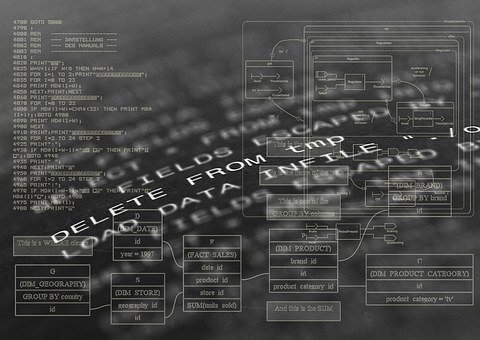
Machine learning hugely encompasses algorithms, and Python makes it simpler for developers in testing. It comes with the potential of implementing the same logic with as less as one-fifth of code required in other OOP (object-oriented programming) languages. In addition, Python’s integrated approach lets developers to check code methodology.
These are the key factors that smoothen the working process, making Python one of the hottest languages today.
Machine learning with Python
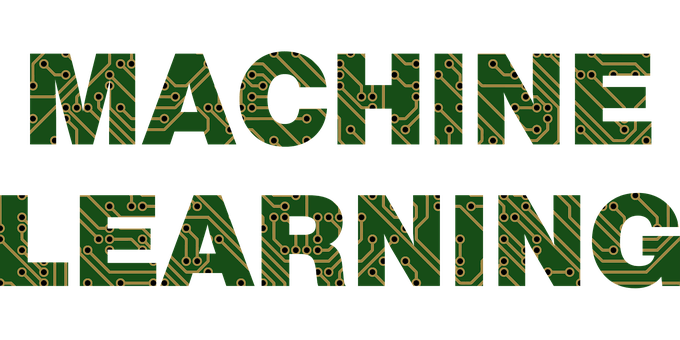
We have already seen Python’s rich features that make the programming language one of the most common backbones of machine learning. If you’re a beginner in this field and plan to proceed in your career with the help of Python, here’re some simple yet highly beneficial steps to attain future of image.
Brush up fundamental Python skills

You have to have some basic knowledge of Python in order to use it for machine learning. Anaconda is the version of Python that is supported by all commonly used OSs like Windows, Linux etc. It offers a complete package for machine learning that includes scikit-learn, matplotlib and NumPy. If you don’t have any prior knowledge of programming, there’re lots of online resources, books etc that can help you obtain the fundamental knowledge.
Basic machine learning skills
Before diving deeper into the process, it’s imperative to have a robust grasp of fundamental machine learning skills. There’re plenty of online courses that can help you to gain adequate knowledge of machine learning before working with various algorithms. Additionally, when people take advantage of data science bootcamp, they may learn machine learning skills easily.
Getting started

Assuming you’ve learned the basics of Python and machine learning, it’s time to use the scikit-learn library to implement machine learning algorithms. Try to obtain significant amount of hands-on experience in the library by working on sample projects.
Explore the algorithms

Once you’ve obtained enough knowledge of scikit-learn, it’s time to move toward advanced levels where you should explore different popular machine learning algorithms. Some of these common algorithms include linear progression, logistic progression, k-means clustering etc.
Moving forward
At this stage, you should try to explore some advanced machine learning topics with Python. Some useful techniques which you should try to master include Dimensionality Reduction, Kaggle Titanic Competition, Support Vector Machines etc.
Getting into deep learning

Being the key developmental element of neural network, deep learning plays a significant role in machine learning. It works as the fundamental block for a diverse range of technologies used in different industries. Neural networks for machine learning can be developed using Python. There’re two deep learning libraries namely Theano and Caffe that come with Python.
Final takeaway
Despite the apparent maturity and age of machine learning, it’s perhaps the best time to learn it, mainly because of its practical uses. And Python is probably the best programming language that can help you excel in your career in this field. With a robust understanding of fundamental machine learning and Python skills, you should be all set to dive deeper. Just remember the fact that as with learning any skill, the more you work with it, the better you become. So, practice diverse types of algorithms and try to work with different datasets to obtain a solid understanding of machine learning using Python, and to enhance your overall problem-solving skills in event space.

Also remember that there’re lots of advanced nuances and steps that you’ll be encountering as you progress. But this post should serve as a good foundation to make you familiar with the relation between machine learning and Python, and help you think through the key factors that will let you proceed further in the future.
If you’re interested to take it forward, just do an online research and you’ll find several low-cost machine learning training courses using Python available in the market. It’s strongly advisable not to trust blindly any course/certification provider’s word. Instead, you should take a closer look and see whether you actually find it worth investing your effort and time on. People give heed to find the course because every course isn’t Magnimind.


